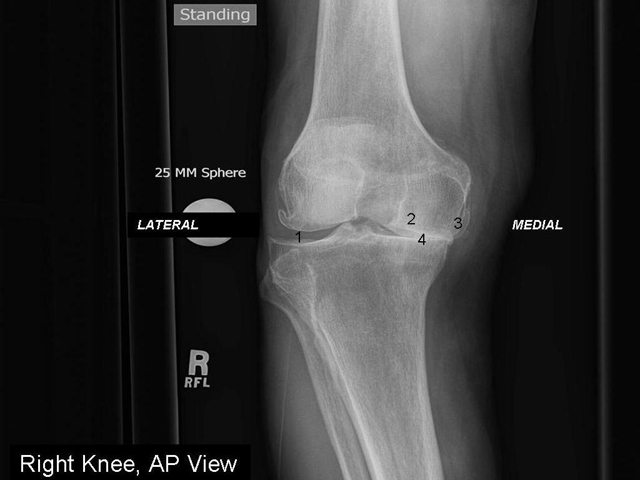Summary
Findings
This radiograph of the R knee shows varus alignment and destruction of the medial compartment with bone-on-bone contact. Note the lateral joint space widening (1), subchondral sclerosis (2), osteophyte formation (3), and medial joint space narrowing (4).
Impression
Degenerative Joint Disease, right knee
Clinical Pathologic Correlation
Degenerative Joint Disease (DJD) most commonly affects the knee joint. Diagnosis includes knee pain plus at least three of the following criteria: 1) >50yo, 2) Morning stiffness for <30 mins, 3) Crepitus on active motion of the knee, 4) Bony tenderness, 5) Bony enlargement, and 6) No palpable warmth. Patients typically complain of knee pain with instability or buckling, especially with prolonged sitting or standing, or when descending stairs. On physical exam, passive range of motion commonly elicits pain and crepitus. A joint effusion posteriorly may be appreciated (Baker’s cyst), which should not be “drained.” Treatment includes pharmacological or intra-articular steroid injections for pain control and physical therapy to maintain range of motion and strength. When conservative measures fail, surgical management may be considered.
View
Radiograph
Specimen
Right Knee Joint
Image Credit
Douglas Chang, M.D., Ph.D.Department of Orthopedic Surgery
School of Medicine
University of California, San Diego

